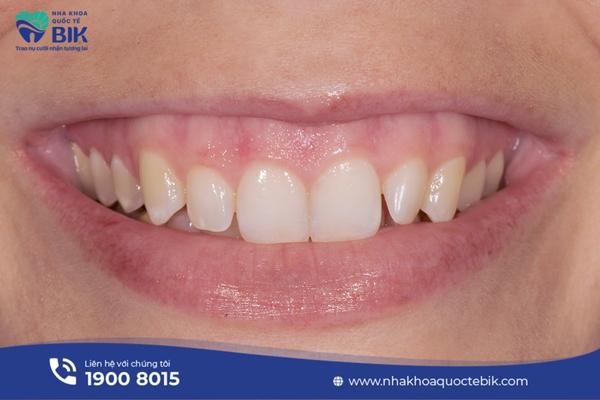Gummy smile is not a rare phenomenon, this is not a health problem but affects the beauty of the face. When encountering a gummy smile, many people feel a lack of confidence when communicating and can cause obstacles at work, so many people choose the gum cutting method to overcome this condition. However, whether gum cutting will grow back is something that many people are interested in, so let’s find out through the article below.
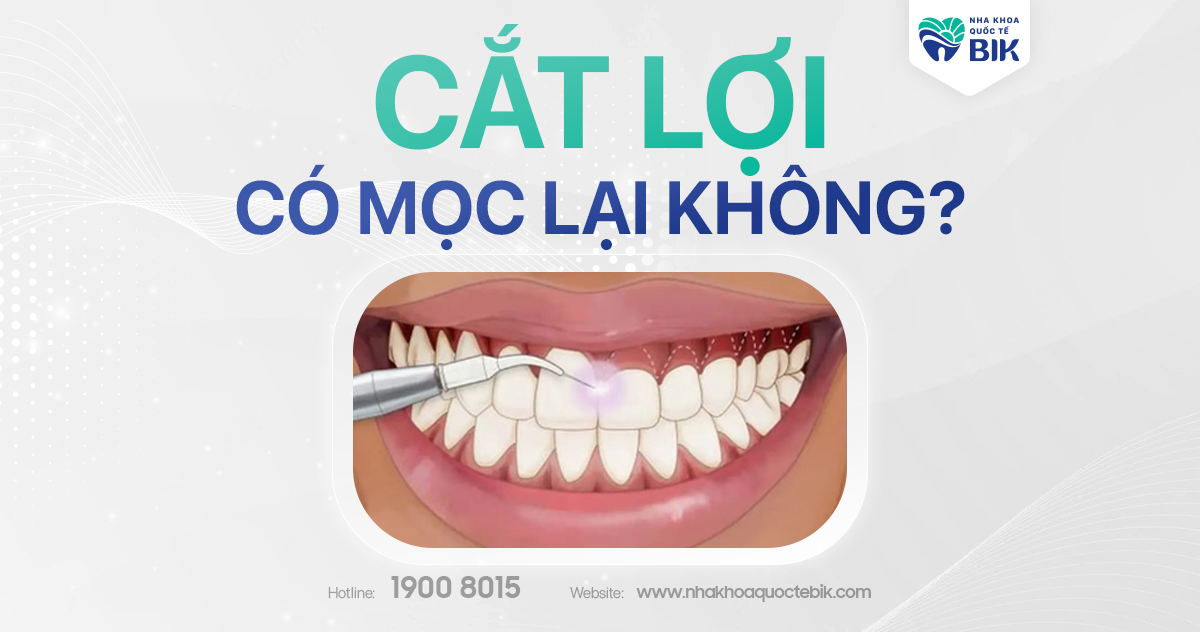
Causes and Treatments for Gummy Smiles
First, let’s learn about the causes and treatments for gummy smiles:..
Causes of Gummy Smiles
- Gum infections that occur during teething cause teeth to grow improperly, causing the gums to be covered.
- When teeth grow late, this can lead to teeth that are too short, causing the gums to cover the teeth.
- The upper lip moves higher when smiling, usually about 7 – 8mm. If it moves too high, it can cause gummy smile.
- The cause may be due to excessive growth of the upper jaw
- Or it may be due to a deep bite.
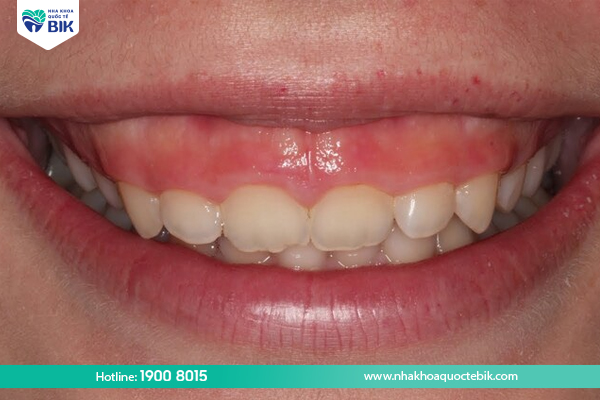
The most effective way to treat gummy smile
Gingivectomy is a method to treat gummy smile by removing excess gum, making the teeth longer and the gum-tooth ratio more even and beautiful. During the surgery, the doctor will adjust the position of the gums so that the teeth are exposed after removing the excess gums. The gum cutting process is performed under anesthesia so it does not cause pain to the patient.
The time to perform gum cutting is only 30 to 60 minutes, after completion, the gum line will be sutured with cosmetic thread, causing no scarring.
Will gum cutting grow back?
Will gum cutting grow back? The answer is that the gums absolutely cannot grow back if the customer chooses a reputable address to perform it. That is where there are highly skilled doctors and practical experience.
Excess gums only grow back when the doctor performs the wrong technique or cuts the wrong proportions. In addition, at dental facilities using poor quality cutting tools will also stimulate the gums to grow back quickly.
However, customers need to distinguish between the gums growing back and the case where the gums hug the tooth root, making them feel like the gums have grown back. However, in reality, this is not the case.
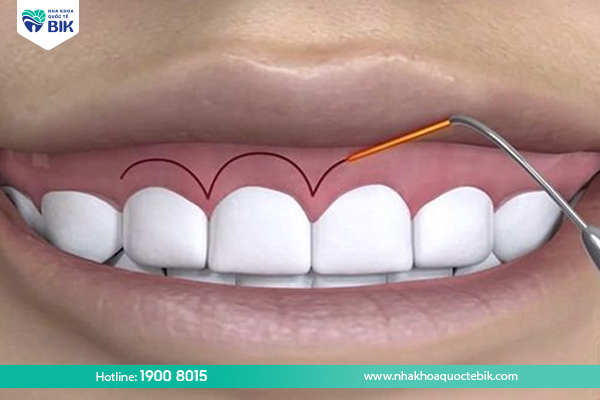
Is gum cutting dangerous?
If gum cutting is performed by experienced and skillful dental experts, the intervention and surgery process is quick and accurate.
This is a simple and minimally invasive method, so it is very safe. Moreover, during the surgery, the patient will be anesthetized so he will not feel any pain.
After completing the surgery, the doctor will prescribe pain medication to help the patient feel more comfortable.
After just a few days, the patient can eat and drink normally without difficulty. In terms of aesthetics, cosmetic sutures for the gums will not leave any scars or traces. You will soon have a more beautiful and confident smile.
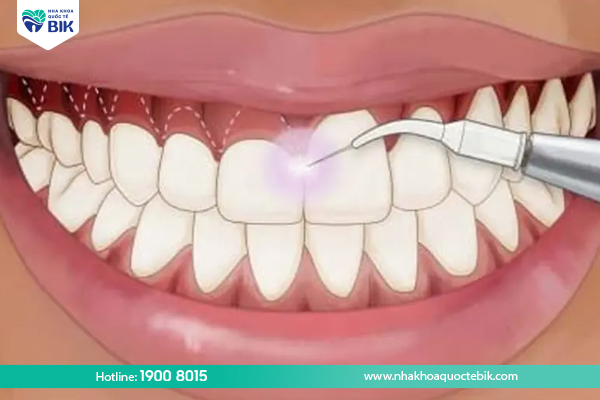
In which cases should gum cutting be used to treat gummy smile?
Not all cases of gummy smile require cosmetic gum cutting, but this method needs to be prescribed by a doctor:
- When the tooth body is too short, causing the tooth body to be covered by the gums.
- When gingivitis or the gums grow too strong due to the use of high doses of antibiotics.
- When the teeth are not properly aligned, causing the gums to be exposed too much when smiling.
- When the upper incisors are sunken, leading to more exposed gums when smiling.
- When the upper jaw bone grows excessively, causing the jaw area to be pushed out, when smiling, the gums will reveal a large amount of gum.
- When the orbicularis oris muscle develops too strongly, causing the upper lip to be pulled up a lot when smiling.
In summary, through the above analysis, we see that treating gingival recession by adjusting the gums is a popular and highly effective method that many people use, but it needs to be prescribed by a doctor.
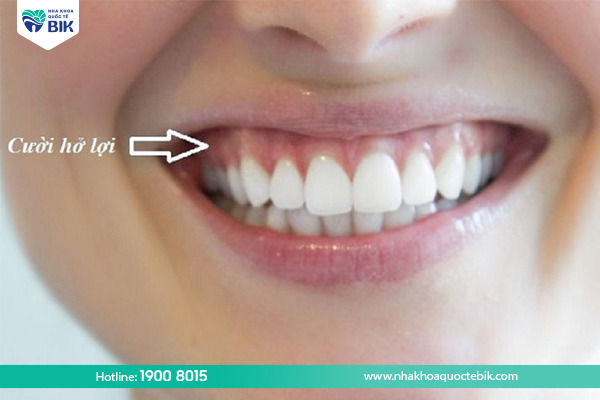
Cases where gingival recession is indicated
The gums may grow back after the recession if not treated properly, but not all cases will grow back. Here are some cases where gingivectomy is indicated:
- The gums cover too much of the teeth, creating a gap between the teeth and the upper lip, leading to a gummy smile and short teeth.
- Gingivitis, gingival hypertrophy due to improper dental techniques.
- The upper jaw bone is overdeveloped or protrudes under the lip, causing the gums to show when smiling
In short, will gingivectomy grow back? The answer is no. However, you should visit a doctor to determine the cause and propose a suitable solution to effectively correct your gummy smile.




